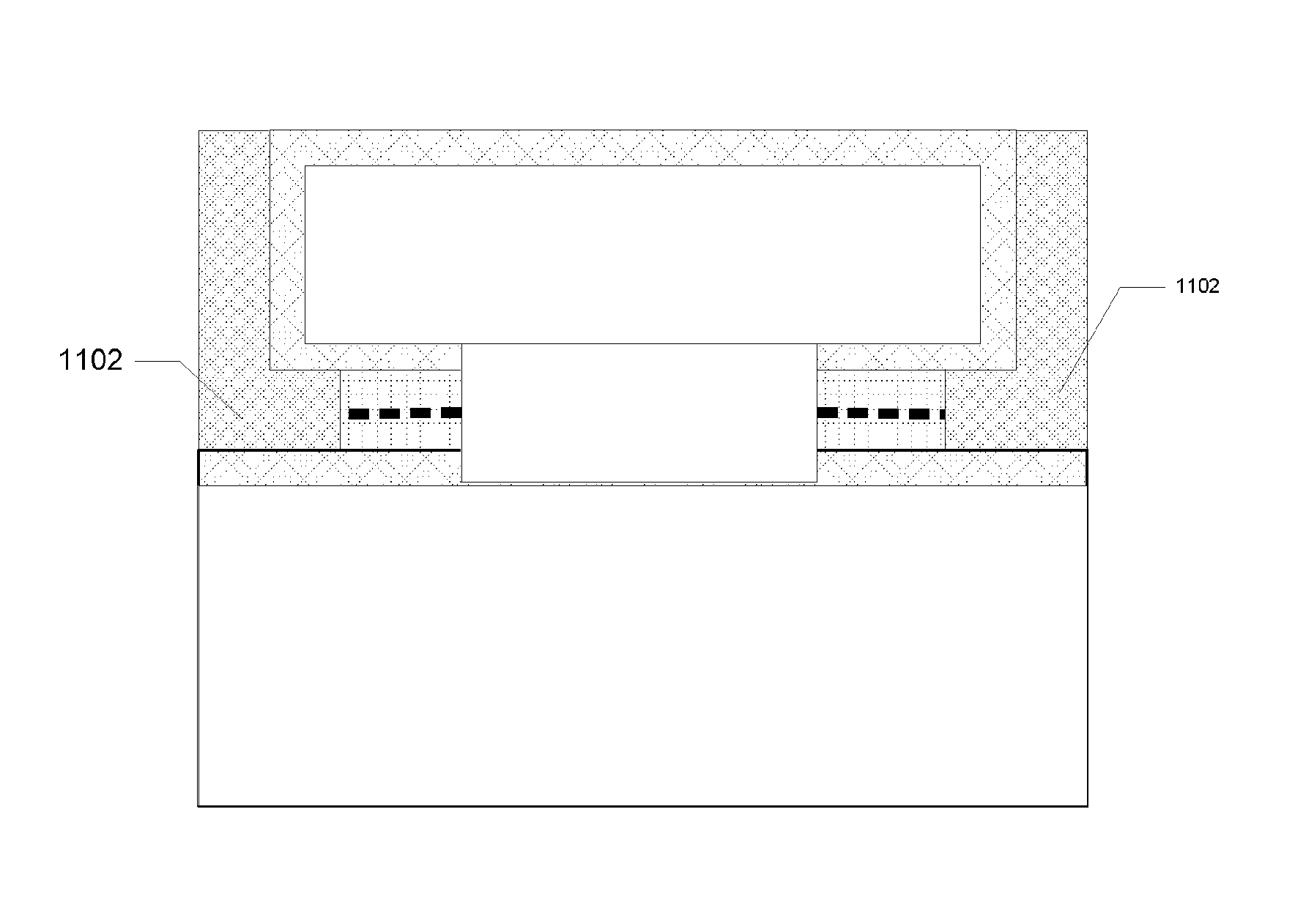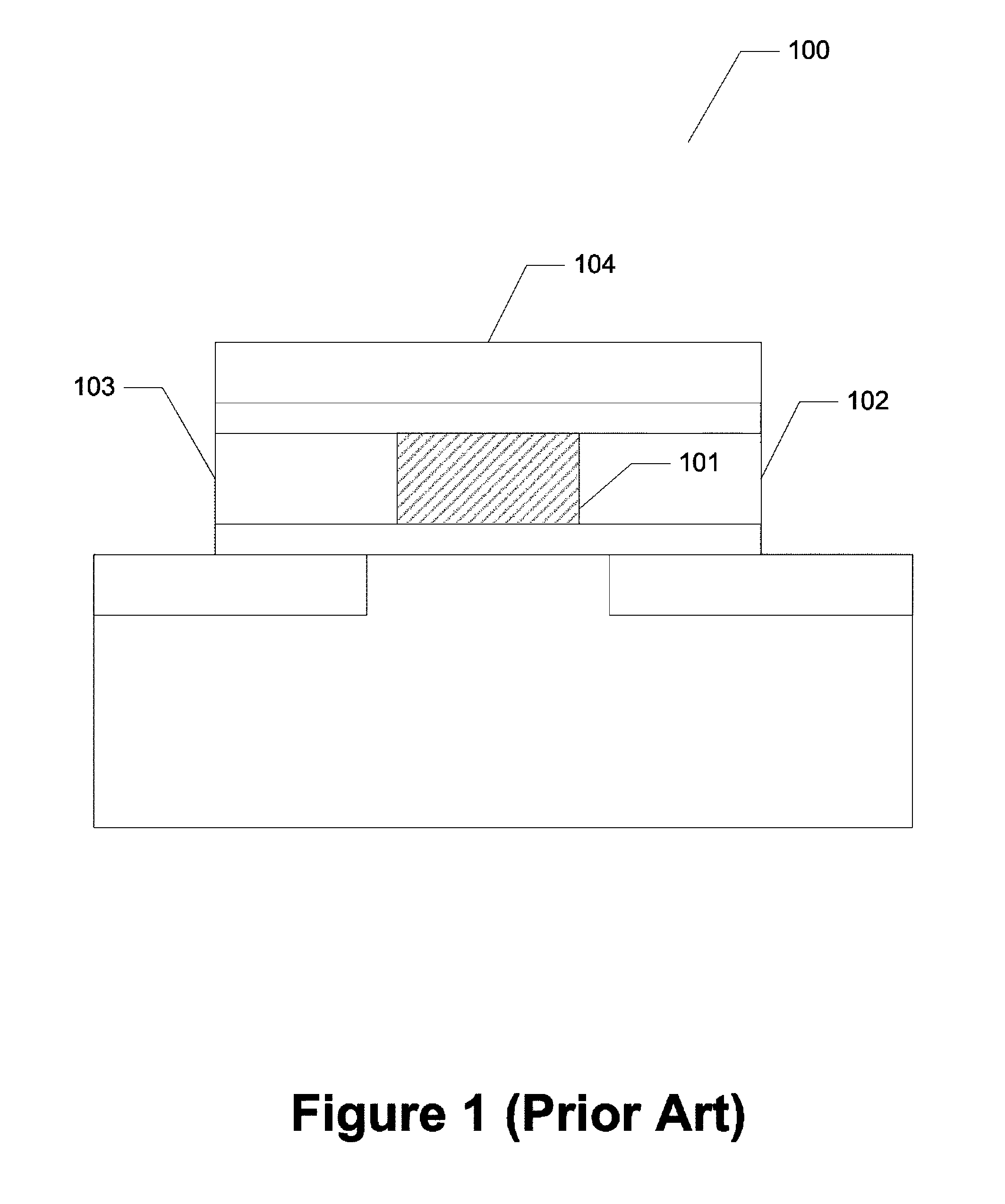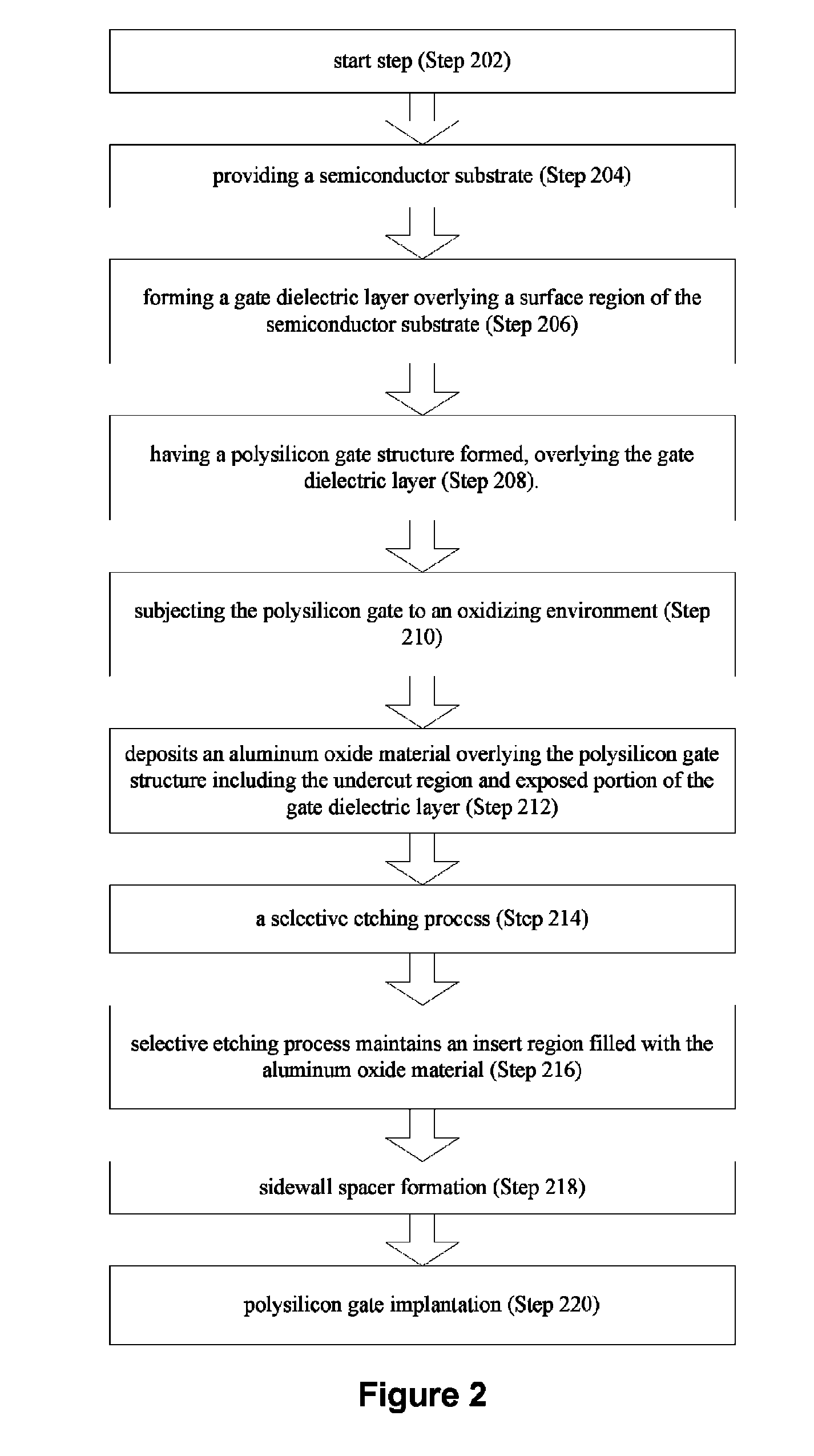Method for manufacturing twin bit structure cell with Al2O3/nano-crystalline Si layer
a technology of nano-crystalline si layer and twin bit structure, which is applied in the field of integrated circuits, can solve the problems of high cost of integrated circuit or chip fabrication facilities, difficult devices, and limited process use of integrated fabrication processes, and achieve the effect of cost-effective implementation
- Summary
- Abstract
- Description
- Claims
- Application Information
AI Technical Summary
Benefits of technology
Problems solved by technology
Method used
Image
Examples
Embodiment Construction
[0015]According to embodiments of the present invention, techniques directed to manufacturing memory devices are provided. Merely by ways of example, embodiments according to the present invention provide a method and a structure for manufacturing a twin bit cell structure for a non-volatile memory device. But embodiments according to the present invention can be applied to manufacturing of other devices.
[0016]FIG. 1 is a simplified twin bit cell structure using a conventional method for fabrication. As shown in FIG. 1, the twin-bit structure 100 has two conductive regions 102 and 103 that can be configured to hold charges. The two conductive regions are separated by an isolation region 101. A control gate 104 overlays the conductive regions.
[0017]As an example, the twin bit cell structure shown in FIG. 1 is manufactured using the following steps:[0018]1. provide a p-type substrate;[0019]2. form a gate oxide layer overlaying the substrate;[0020]3. perform low-pressure chemical vapor...
PUM
 Login to View More
Login to View More Abstract
Description
Claims
Application Information
 Login to View More
Login to View More - R&D
- Intellectual Property
- Life Sciences
- Materials
- Tech Scout
- Unparalleled Data Quality
- Higher Quality Content
- 60% Fewer Hallucinations
Browse by: Latest US Patents, China's latest patents, Technical Efficacy Thesaurus, Application Domain, Technology Topic, Popular Technical Reports.
© 2025 PatSnap. All rights reserved.Legal|Privacy policy|Modern Slavery Act Transparency Statement|Sitemap|About US| Contact US: help@patsnap.com



